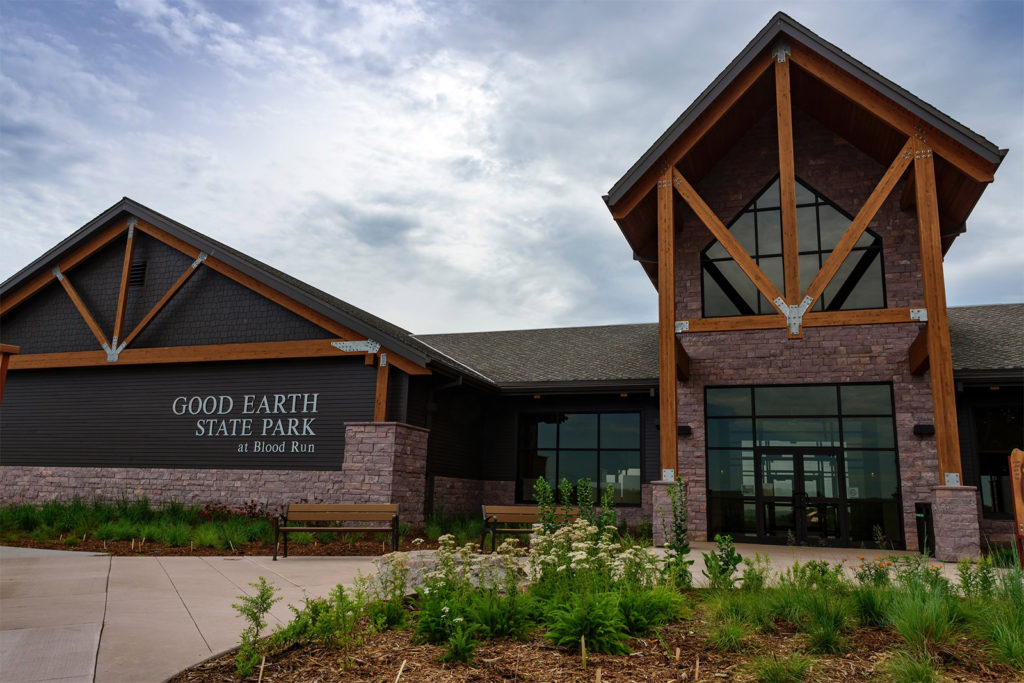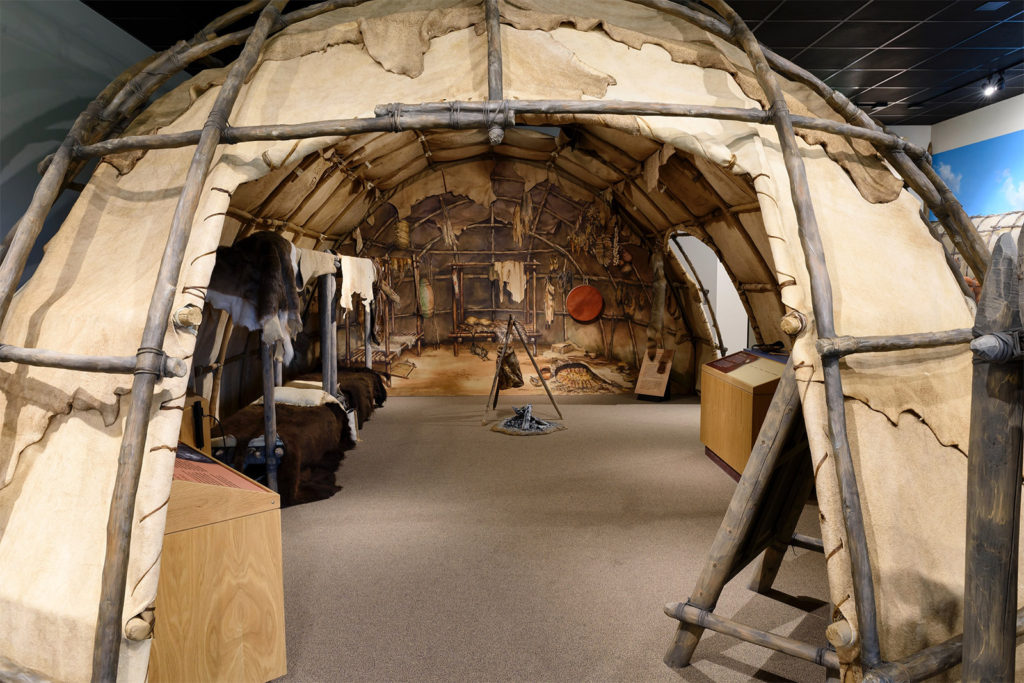EcoSun’s Proposed Prairie at Good Earth State Park
“I am the grass . . . .let me work.” Carl Sandburg
The South Dakota Game, Fish, and Parks Department recently contracted with the non-profit organization, EcoSun Prairie Farms, Inc., to establish and manage native prairie on 106 acres of retired farmland within the Good Earth State Park near Sioux Falls. Good Earth is this region’s heritage landscape.

This field was once protected with tall grass prairie dominated by big bluestem, one of the grasses that sustained for centuries the bison and a vibrant Oneota village of about 3,000 people living in dome-shaped lodges and occupying land along both the Iowa and South Dakota sides of Big Sioux River. The woodland and river provided needed resources such as fuel and fish; however, without the prairie, success would have been less assured. When the project is completed, this site will be occupied by one of the largest tracts of restored prairie with hiking/walking trails and interpretation that is open to the public in southeastern South Dakota.
The restored prairie will add a new dimension to the Park: the opportunity to walk through expansive fields of tall, waving grasses and shorter flowers while encountering nectar-seeking Monarch and skipper butterflies, native bees pollinating, and prairie birds such as bobolinks, meadowlarks, and grasshopper sparrows.
Prairies benefit today’s modern society as they have throughout history. The list of ecosystem services re-gained when restoring prairie is long and significant:
- Fish and wildlife habitat
- Pollination of crops
- Soil health
- Panoramic beauty
- Erosion control
- Flood attenuation
- Groundwater recharge
- Water protection and purification
- Carbon storage and climate protection
- Biodiversity of all classes of organisms

Good Earth will not be EcoSun’s first prairie restoration project. For seven years, EcoSun restored and managed a 500-acre tall grass prairie, named the “Prairie Farm” to demonstrate to the public and farmers the beauty, biodiversity and agricultural potential of prairie. We produced nutritious grass hay fed to cattle, prairie-raised beef, native plant seeds, and bountiful wildlife habitat re-colonized by grassland birds. Our organization welcomes the opportunity to apply what we learned about prairie restoration to one of the newest and most popular parks in South Dakota located just a few miles from nearly 1/3 of the population of South Dakota. The Prairie Farm story is told in subsequent pages of this website.
EcoSun’s proposed prairie restoration project, scheduled to begin in early spring, 2021, is strongly supported by Park management:
“Game, Fish and Parks is excited and grateful regarding our EcoSun partnership and their initiative to establish a sizeable perennial prairie at Good Earth State Park. We view establishment of a tall grass prairie at the park as a major step forward in enhancing the mission and appeal of the park and applaud EcoSun’s vision about the importance and value of prairie.“ Jeff VanMeeteren, Regional Park Supervisor, SD Game, Fish and Parks
The EcoSun Board of Directors, advisors and support staff possess the necessary skills and experience to carry out the project to completion. Our board of six members includes three prominent scientists (Tom Schumacher, Carter Johnson, Arvid Boe) who conducted research and have taught courses in natural resource management at South Dakota State University. Three others include, Les Miller, a farmland manager and broker in Sioux Falls, Meghann Jarchow, head of the Environmental Studies and Sustainability Program at the University of South Dakota, and Pete Carrels, writer/communications strategist at the University of South Dakota. Advisors to the Board include: Craig Spencer, professor emeritus Augustana University, Mike Cooper, former director of Planning and Development Services for the City of Sioux Falls, and Cody Zilverberg of the Dakota Lakes Research Farm in Pierre.
EcoSun is currently fund-raising to support the prairie restoration project. The GFP has waived land rental costs as an in-kind contribution to the project. Funds are needed to initiate and complete the traditional 3-year period to establish prairie. The sequence begins by determining the size and location of plantings representing the types that occurred prior to farming, followed by preparing the land for planting, securing appropriate mixtures of native prairie seed, drilling in the seed, augmenting biodiversity by growing rare and showy forbs in a greenhouse and in field plots, and controlling annual weeds. Year two involves continuing to transplant forbs to boost biodiversity of the developing prairie, spot control of weeds, and occasional mowing. During year three we will extend existing hiking/walking trails into the restored prairie and prepare interpretive signage and brochures, along with any vegetation management needed to rate the planting as “established.” Extension of hiking/walking trails may begin in year two, depending on the rate of development of the growing prairie.
This project will diversify the visitor experience at one of the most important and popular outdoor recreational settings and parks in our state and region. A mission of this park is to educate visitors about the Native Americans who resided where the park is now situated and to encourage visitors to experience nature, similar to that which existed when Native Americans populated the area.
Those interested in supporting and contributing to the funding of this project can contact Dr. Carter Johnson (carter@ecosunprairiefarms.org)

















